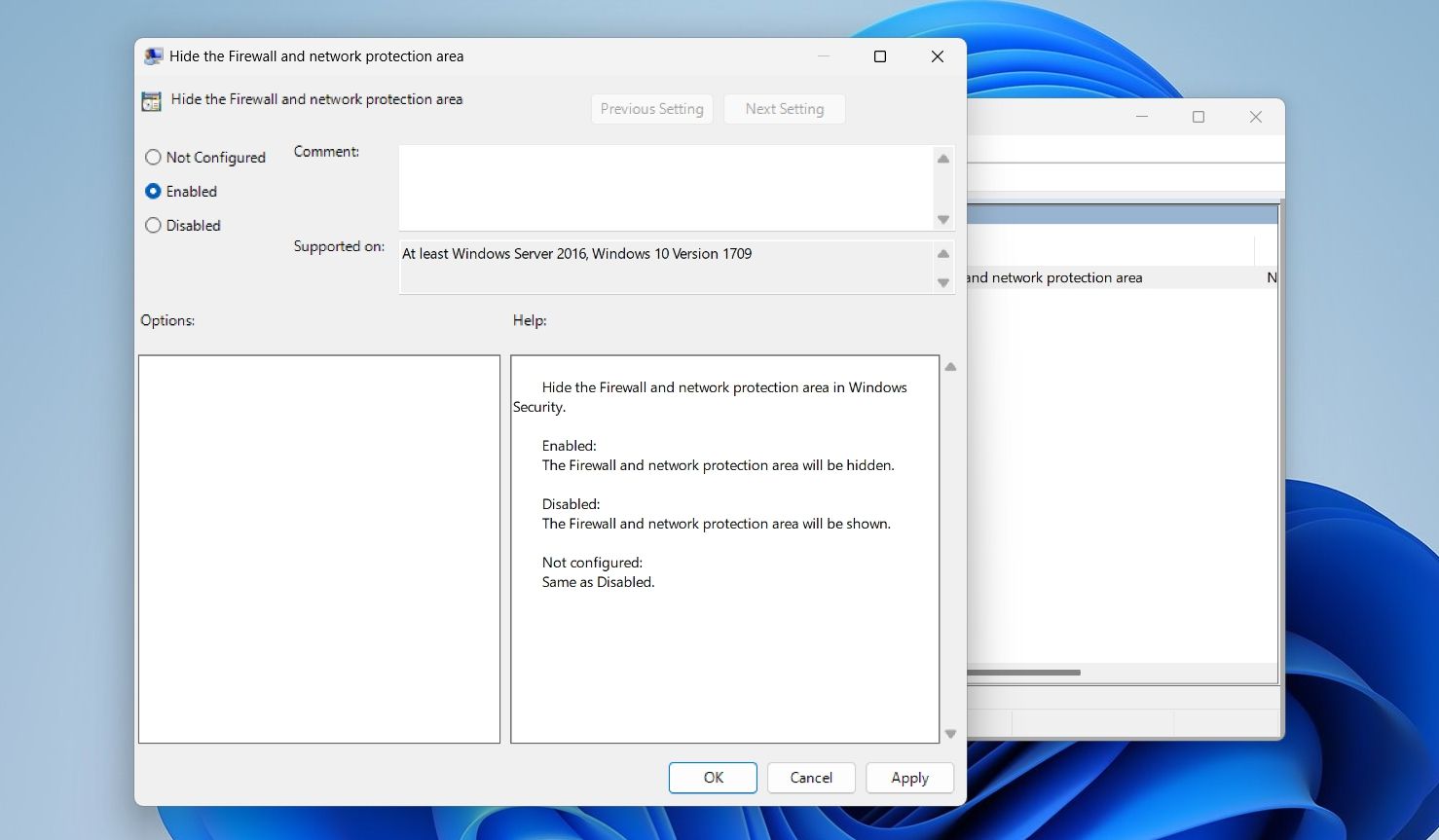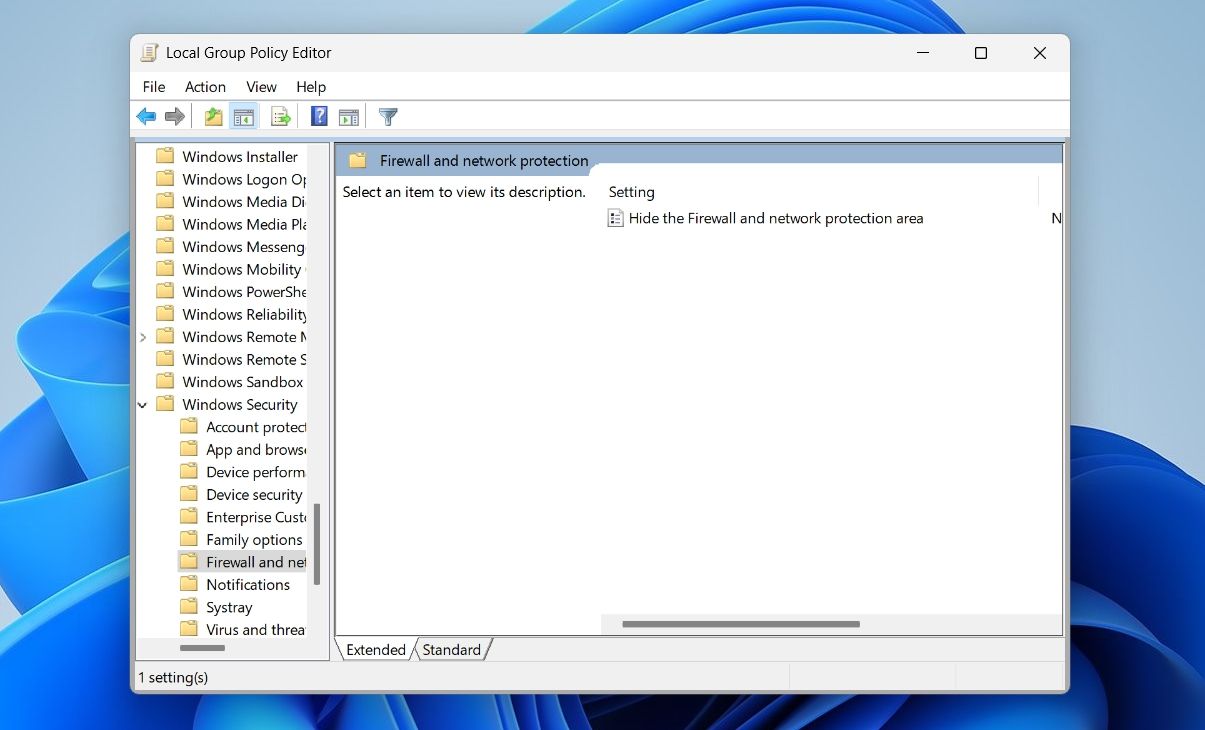
Window’s Security Protocol: Concealing Firewall Areas

Window’s Security Protocol: Concealing Firewall Areas
Do you share your computer with someone else and not want them to access your Firewall & Network protection settings? If yes, then this is the place where you need to be.
In this article, we’ll see how you can hide or show the Firewall & Network protection settings area in Windows Security.
Why It’s Important to Hide the Firewall & Network Area in Windows Security
Windows Security is your one-stop security center to protect your personal data and network settings. It is divided into different security sections for better and faster security management.
One of these is the Firewall & Network protection area. This is where you can view the Microsoft Defender Firewall status and the type of networks your device is connected to. You can also use it toblock or allow an app through the firewall and reset firewall settings.
Therefore, keeping this area hidden is important, especially if you share your computer with someone else. You must be signed in as an administrator if you want to hide the Firewall & Network area, so check outhow to enable or disable the built-in administrator account on Windows if you need to turn it on.
How to Hide or Show Firewall & Network Area in Windows Security Using the Local Group Policy Editor
The Local Group Policy Editor is a utility using which you can manage parts of Windows, enforce specific policies, and automate repetitive tasks like mapping printers. This utility is reserved for the Professional, Enterprise, and Education editions of Windows. Thus, if you are using the Home edition, check out our guide on how toaccess the group policy editor in Windows Home .
Nevertheless, here’s how to use Local Group Policy Editor to hide the Firewall & Network area in Windows Security:
- Press theWin + R hotkeys to open the Run dialog box.
- Typegpedit.msc and pressEnter . It’ll open the Local Group Policy Editor.
- Head towards the following location:
Computer Configuration > Administrative Templates > Windows Components > Windows Security > Firewall and network protection - Double-click theHide the Firewall and network protection area to open its edit window.

- Select theEnabled option.

6. ClickApply >OK to save the changes.
That’s it. You might need to restart your computer for the changes to take effect.
If you want to unhide the Firewall & Network area, open the Local Group Policy Editor again and repeat the above steps. At the very end, select theDisabled option and then save the settings.
Keep Your Network Settings Safe and Secure
It’s very important to hide the Firewall & Network protection area if you don’t want others to view or change the important settings of your computer. You disable this area using the Local Group Policy Editor, as mentioned above.
Meanwhile, you might be interested to know different ways to open the Windows Security app.
Also read:
- [New] 2024 Approved Peak Performance PCs Top-Rated Screen Capture Tools Reviewed
- [Updated] Top Game Screens for PS5 and Xbox Series X Revealed
- Altering Visual Fields in Windows Systems
- Comprehensive Guide: 35 Essential Steps for Ransomware Defense as Recommended by MalwareFox
- Deciphering and Defusing Error 0X80070570: Saving Your Damaged Files in Windows 11
- In 2024, How To Remove Phone Number From Your Apple ID from Your iPhone 12 Pro Max?
- In 2024, Two Ways to Track My Boyfriends Samsung Galaxy Z Flip 5 without Him Knowing | Dr.fone
- Overcoming the Challenge of Failed Steam Updates: A Comprehensive Guide
- Steps to Correct Device Opens Issue on Audacity in Windows
- Troubleshooting Teamsters Downtime on Windows 11, 10
- Title: Window’s Security Protocol: Concealing Firewall Areas
- Author: Richard
- Created at : 2025-01-10 23:38:35
- Updated at : 2025-01-12 22:39:39
- Link: https://win11-tips.techidaily.com/windows-security-protocol-concealing-firewall-areas/
- License: This work is licensed under CC BY-NC-SA 4.0.
